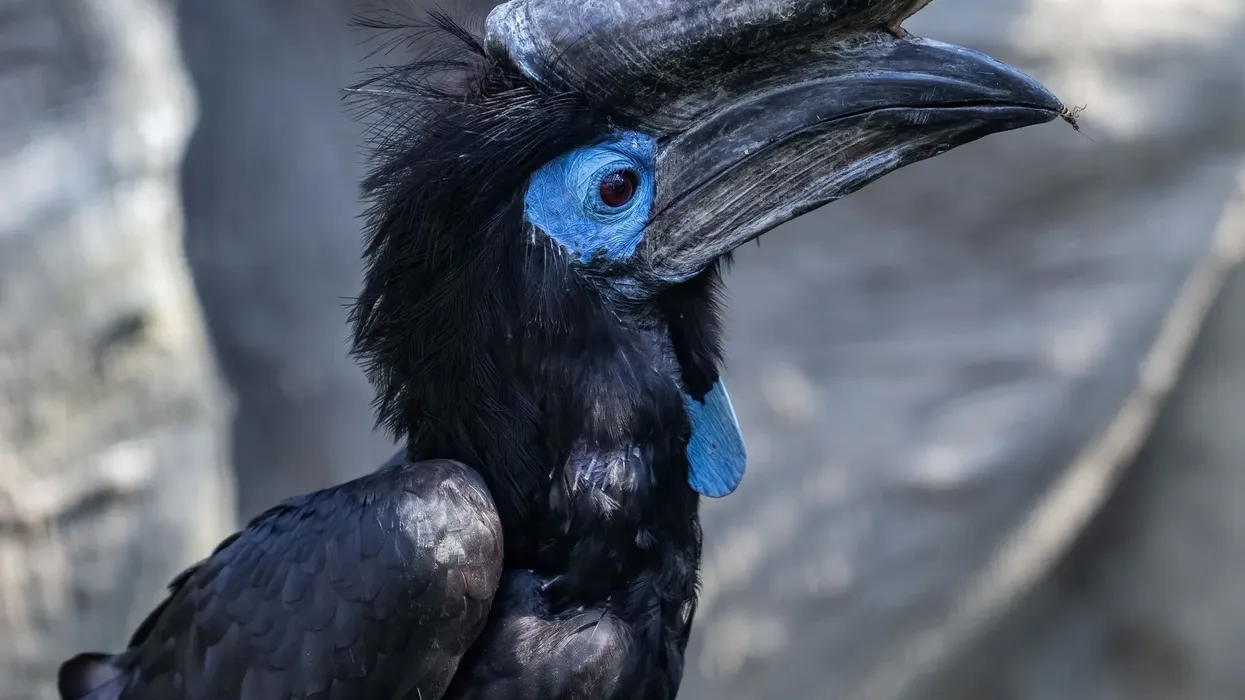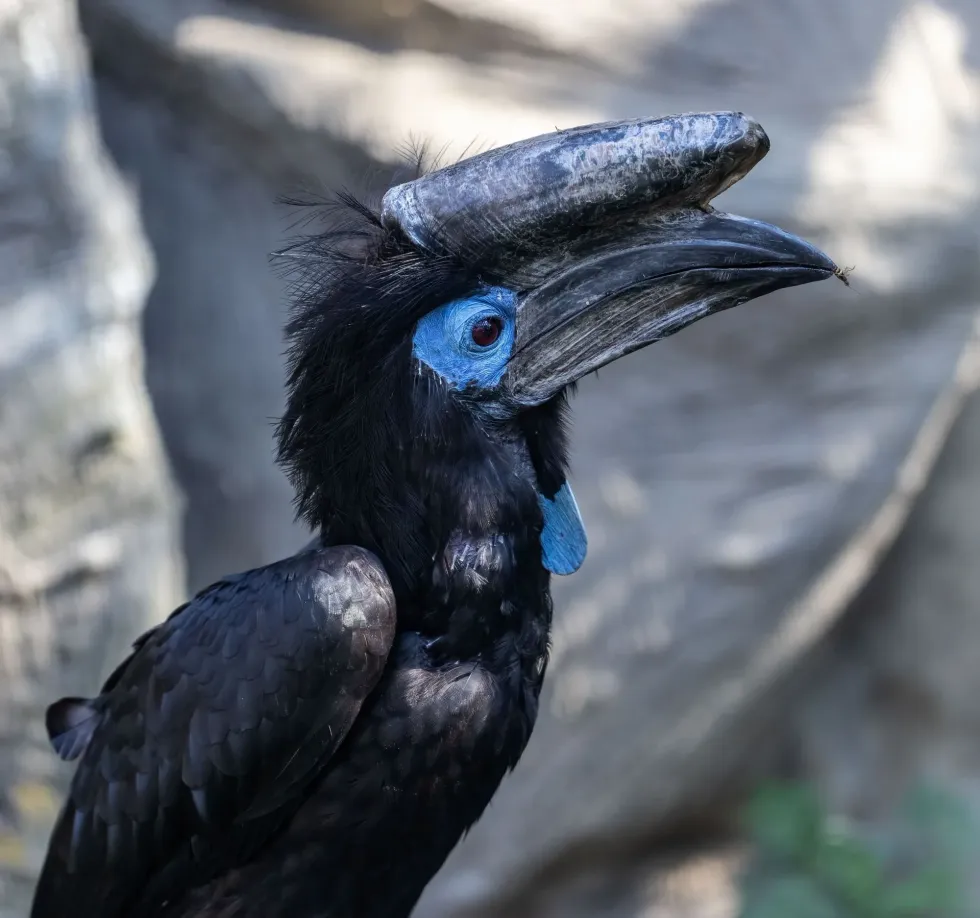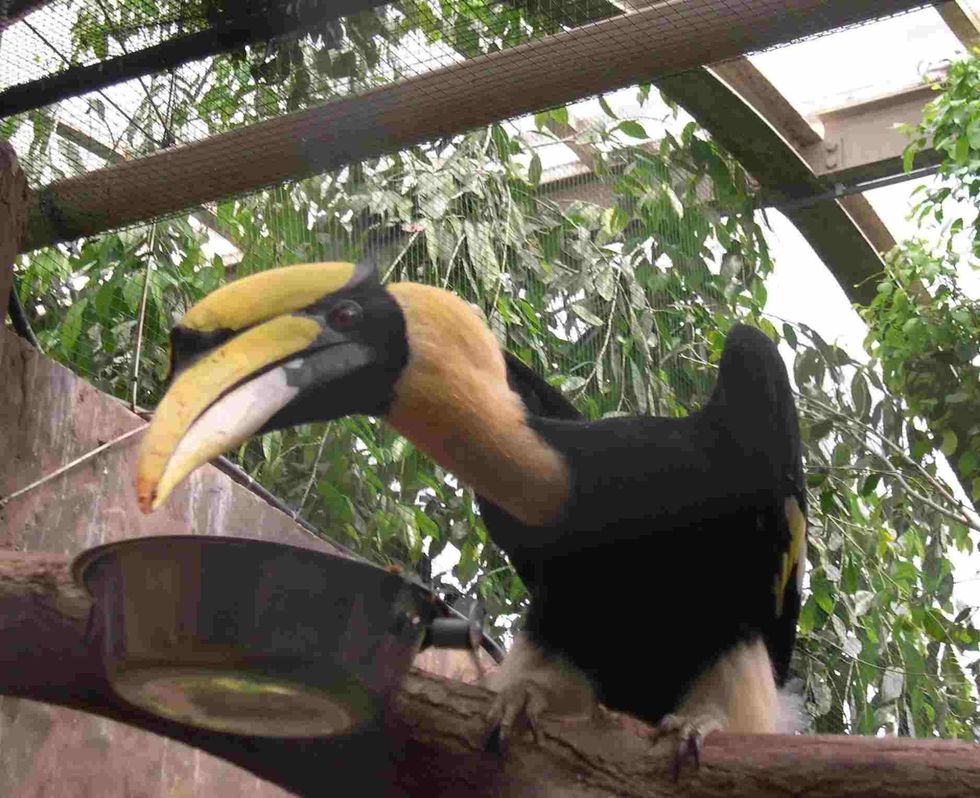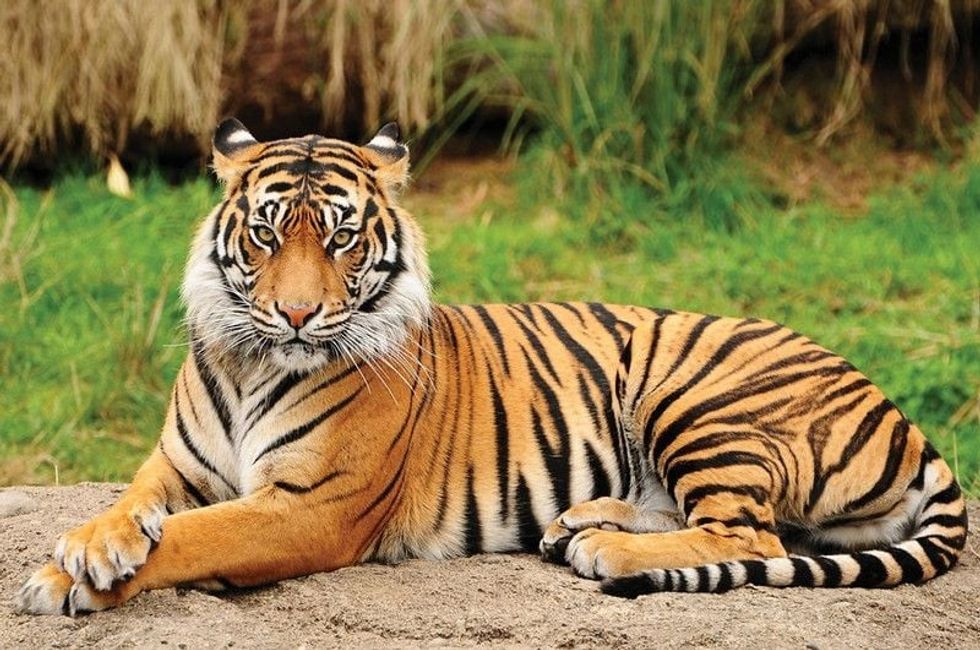Are you a bird admirer and in the search of some awesome birds like the great hornbill and kea parrot? Don't worry as we have the perfect fit for you.
We present to you the black hornbill. The black hornbill (Anthracoceros malayanus) is a species of bird that belongs to the Bucerotidae family.
The Bucerotidae family houses all the different hornbills that can be found in the globe like the African black hornbill or the dwarf black hornbill and others. It is estimated that there are about 60 different species of hornbills that are found on our planet.
The black hornbill is a Vulnerable species of hornbill that mainly resides in the dense tropical and secondary forests of South-East Asia. These include countries like Indonesia, Malaysia, Sumatra, Thailand, and others. These are medium-sized omnivorous birds, i.e they feed on both plants and animals.
If you find our content interesting and informative then do check out our other cool articles on the banded kingfisher and blue-eared kingfisher.
Black Hornbill Interesting Facts
What type of animal is a black hornbill?
The black hornbill (Anthracoceros malayanus) is a type of hornbill bird that belongs to the family of Bucerotidae.
What class of animal does a black hornbill belong to?
Similar to all species of bird, the black hornbill (Anthracoceros malayanus) too belongs to the class of Aves of the Animalia Kingdom.
How many black hornbills are there in the world?
Owing to very little information and data being available, the exact population range of the black hornbill (Anthracoceros malayanus) is not yet quantified.
According to the International Union for Conservation of Nature or the IUCN Red List, the black hornbill (Anthracoceros malayanus) is a Vulnerable species, however, their population is locally common.
The population trend over the years has shown a constant decline in the population of this species of bird. Human activities like habitat destruction, climate change, and most importantly hunting of this species are the major reasons why these birds are endangered today.
The International Union for Conservation of Nature or the IUCN Red List also estimates that about 30-49% of the population of this bird is going to be depleted if the decline rate remains constant.
Where does a black hornbill live?
The black hornbill range map is the countries of Southeast Asia. These include countries like Indonesia, Borneo, Sumatra, Malaysia, and Thailand.
What is a black hornbill's habitat?
The black hornbill (Anthracoceros malayanus) is a species of bird that has a wide range of areas as its habitat. These include thick and dense primary forests, gallery forests as well as secondary forests that are found in Indonesia and Thailand. These birds can also be found in tidal forests under an elevation of 656 ft (200 m).
Who do black hornbills live with?
Owing to very limited research not much information about the social life of the black hornbill (Anthracoceros malayanus) is known to us. These birds usually like to stay alone. They are rarely known to form groups or flocks. Each flock can contain a maximum of 33 individuals.
How long does a black hornbill live?
The exact lifespan of the black hornbill (Anthracoceros malayanus) is currently unknown. However, we can draw up a conclusion based on the lifespan of the other species of hornbills that are present on the globe.
Hornbills in general have lengthy lifespans. They tend to live for around 30-40 years out in the wild, while they reach ages of around 50 when they are provided the utmost care in zoos.
How do they reproduce?
The reported months for the breeding of the black hornbill (Anthracoceros malayanus) are January, February, April along with November and December. These birds are not found breeding annually, that is, these birds don't mate and lay eggs every year.
The nests are usually natural cavities or other creaks found in trees. The clutch size of these birds is about two to three eggs and almost 30 days are required for the proper incubation of the eggs.
During this breeding and incubation period, the duty of feeding the chicks along with the mother falls on the male bird. The fledging usually takes around 50 days and after that, each adult individual takes care of the fledglings.
What is their conservation status?
The International Union for Conservation of Nature or the IUCN Red List places the black hornbill (Anthracoceros malayanus) as a species that is Vulnerable. The population trend of these hornbills over the years has shown a steady decline.
This is largely due to various human activities like habitat destruction, climate change, and hunting. Proper protective and conservative steps should be undertaken at the earliest to protect these birds from any more danger. Else the day is not far away when this species is bound to become an extinct species.
Black Hornbill Fun Facts
What do black hornbills look like?
The majority of the plumes of these hornbills are black in color. The beak in the males is bigger in size in comparison to females. The beaks are yellow in color with casque in them. These birds also have elongated tail feathers that often contain white tips. The young ones tend to have pale yellow to greenish bills.

How cute are they?
Birds are often acknowledged as pretty animals by a majority of the human population, and the black hornbill bird (Anthracoceros malayanus) is no exception to the same. Bird lovers and ornithologists are bound to find these birds to be extremely adorable.
How do they communicate?
Very little is known about the communicative methods of the black hornbill (Anthracoceros malayanus) species. Vocalizations have been recorded in many areas for these birds. It assumed that the black hornbill call signs are 'grraaaa' or 'kek'.
How big is a black hornbill?
These hornbills measure almost 24-26 in (60–65 cm) in length. In comparison with the Amazon parrot 13-16 in (33-40 cm), we can say that the former is twice the size of the latter.
How fast can a black hornbill move?
The exact flying speed of these birds is currently undetermined. The southern ground hornbill is a speedy flyer and they can easily reach speeds of 18 mph (29 kph). Thus, we can assume that the flying speed of the black hornbill, can also be similar.
How much does a black hornbill weigh?
The black hornbill (Anthracoceros malayanus) species weighs 2.3 lb (1.5 kg). In comparison with Senegal parrot 0.24-0.28 lb (0.11-0.13 kg), we can say that the former is heavier.
What are their male and female names of the species?
Special names are dedicated to the adult male and female birds of every species. Just like all other birds of the world, the male black hornbill (Anthracoceros malayanus) is known as a cock while their female counterparts are known as a hen.
What would you call a baby Black Hornbill?
Baby birds are known as chicks, therefore in the case of the black hornbill (Anthracoceros malayanus), they are also known as chicks. More accurately, they are known as black hornbill (Anthracoceros malayanus) chicks.
What do they eat?
These are omnivorous birds and thus they feed on both plants and animals. Different types of fruits and figs constitute a major part of their diet.
These birds are also active hunters of small insects and bats. These birds pluck fruits from trees in the early morning and are often known to forage food in dense forests. It is not known whether they eat eggs or not.
Are they dangerous?
No, these are not dangerous birds. And as a result, they pose no harm to humans or the environment.
Would they make a good pet?
It would be unwise to keep the black hornbill (Anthracoceros malayanus) as pets because they are not traditional household birds. These birds prefer the habitat of a forest which is extremely hard to recreate elsewhere. Lastly, these birds are listed as Vulnerable species, and thus keeping them as pets can be illegal.
Did you know...
The black hornbill (Anthracoceros malayanus) has a special technique to capture bats. They wait patiently at the cave openings and when the bats move out from the caves, these birds capture them and feed the food to the young ones.
Is black hornbill selectively reproductive?
Black hornbills are selective about the environment when they breed. They only mate when there is an abundance of food. If there is a scarcity, they produce a lower number of eggs or don't reproduce at all.
Here at Kidadl, we have carefully created lots of interesting family-friendly animal facts for everyone to discover! For more relatable content, check out these mockingbird facts and swallow facts for kids.
You can even occupy yourself at home by coloring in one of our free printable Exotic Bird coloring pages.








